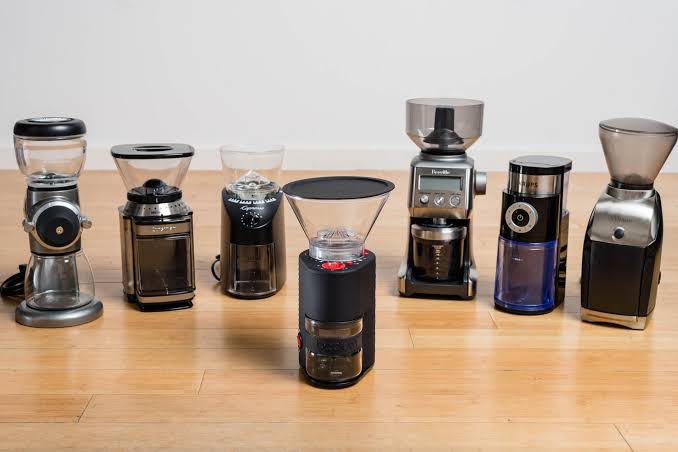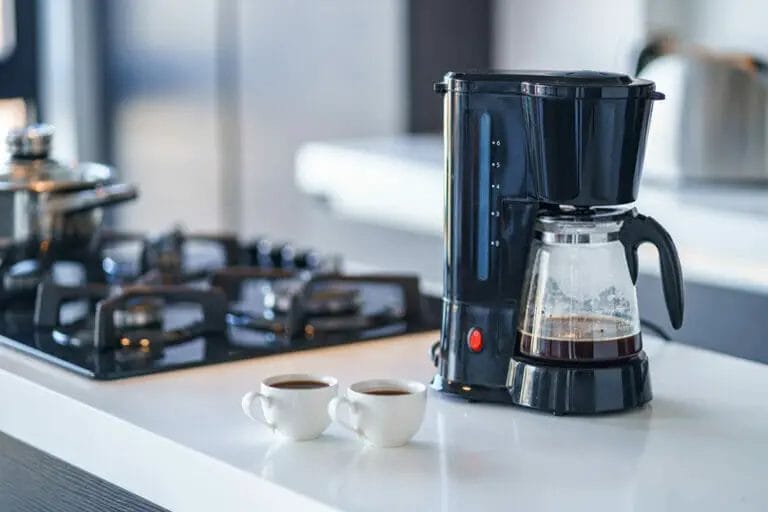Lowest Coffee Acidity By Region

Love coffee? You’re not alone. The world consumes 2.25 billion cups of coffee a day, and over 90% of Americans drink it every day.
But what does your coffee say about you? And what can it tell you about the region in which you live? Dr Joe DeRupo is the executive director of the National Coffee Association in Washington, DC.
He says many Americans have no idea how coffee is produced around the globe or what their cup of joe can reveal about their home region.
“Coffee can tell you a lot about a place,” DeRupo told Business Insider. “It’s fascinating. There’s an incredible amount of scientific information that goes into coffee drinking that is lost on most people.”
So, in this article, we're going to do something we don't usually do: dig in the data. Today we'll look at the world's most less acidic coffee regions, as well as what this tells us about the people that make or drink it.
We’ll also try to figure out where you should be drinking your coffee if you want to get the most out of this delicious beverage.
For more information on our methodology, read below.

Methodology:
The countries with the lowest coffee acidity are:
Central America
With its pleasant tropical temperature, broad lowlands, and abundant soil richness, coffee beans from this location have just the correct amount of acidity.
Instead of a tart aftertaste, coffee from this region is known for its fruity flavour and hints of cocoa.
Guatemalan coffee has an apple-like acidity, but Mexican coffee has a cherry-like tartness. Coffee from Nicaragua is characterized by its “French roast” taste, a mixture of medium body and mellow bitterness.
Coffee from Vietnam has a milder acidity than Costa Rica or Guatemala. It also makes it less fragrant and less acidic than Central American coffee. Vietnamese Coffee beans are light-coloured with a mild, nutty taste.
South America
These South American countries, led mainly by Brazil, Colombia, and Peru, produce most of the world’s coffee.
Like its Central American neighbours, the region benefits from a warm and cool temperature and fertile soil, which supports the production of nuts, chocolate, and spices.
These features contribute to the sweet and nutty undertones of the coffee. Costa Rican coffee has a light and fruity acidity with a mild flavour. It is worth noting that Costa Rican coffee is not dark roasted due to the high level of caffeine in its beans.
Brazilian coffee has a richness in its flavour, which results from its mix of light, medium and dark roasts. Brazil has a long history of growing coffee – as early as 1500 years ago! Its rich soil makes it perfect for growing beans and produces a good cup.
Sumatra
Sumatran coffee is grown in Southeast Asia, specifically in Indonesia. Because of the dark roasting procedure, this coffee has a deep, earthy flavour.
It smells delicious and has a cocoa undertone. Sumatra is not easy to grow but is beloved by those who drink it.
There are three different types of Sumatra coffee, each unique in its way: Mandheling, Timor, and Lintong.
Ethiopia
Ethiopian producers process coffee beans in two ways: natural and washed. Natural coffee is produced when the cherry gets dry around the coffee bean before being removed; washed coffee is made when the fruit is stripped within 12 hours of being picked.
Washed coffee has a more delicate, flowery, and tea-like flavour. In addition, it is less acidic than natural processed Ethiopian coffee.
Uganda
Ugandan coffee is grown around Lake Victoria, in the highlands of Uganda. The regions are a blessing for coffee because of their diverse soil, perfect for increasing Arabica and Robusta beans.
Arabica coffee beans have a light brown-green hue and have a unique fruity taste. Robusta beans are large and dark brown – they are for roasting lighter. The best Robusta coffee is grown in Rwanda and Uganda.
The country produces a unique style, which is commercially known as Uganda Peaberry. It has a more robust flavour than Ethiopian coffee and is less acidic than other African varieties.
If categorized by region, Brazilian and El Salvadorian coffees are most likely the lowest on the acidity chart. However, if you can get beans cultivated at lower elevations, that's even better; greater altitudes tend to correspond with higher amounts of acidity.
These two Brazilian coffees from estate farmers are complex enough to be excellent options for Italian espresso or mixes. They have a mild acidity and a decent body to round out one’s cup of coffee!
Methods for Reducing Coffee Acidity
While the coffee origin is not a perfect predictor of low acidity, strategies reduce coffee acidity.
Dark roasts
The acidity of coffee lowers as it roasts darker. Heat lessens the quantity of acidity, but it also reduces the scent inherent in superb tasting coffee.

Some people like to roast their coffee, but there is a downside to this. Roasting your coffee beans can produce higher levels of acrylamide and furfural, which are toxic compounds.
Thicker Beans
Coffee bean thickness contributes to reducing its acidity. Further, thick beans retain the ability to roast evenly with gentle heat. It means they produce more aromas and have a more consistent flavour.
Coffee Arabica beans
Arabica has a sweeter and gentler undertone than robusta. As a result, it leaves a more delicate, less acidic aftertaste. However, Arabica beans can be harder to grow.
Cold-brew
Cold-brew coffee produced by slow steeping gives a low acid coffee. However, if you prefer your coffee hot or want to prepare a quick cup of Joe in the morning, this may not always be a realistic alternative.

Pre-measured packets
Using pre-packaged coffee may reduce the acidity of your coffee because the acid content gets low from the roasting process.
However, this method does not provide a consistent result and leaves you more chance when brewing your cup.
Is coffee acidity harmful to one’s health?
According to studies, the acid in coffee is a blend of nearly 34 natural acids found in oranges, apples, and vinegar. The coffee bean is naturally acidic due to antioxidants, minerals, and vitamins.
However, when we drink coffee, every one of us has a different bodily reaction to the natural acidity. Some folks are bothered. Others feel a burning feeling, comparable to heartburn or acid reflux.
In addition, when drinking coffee, some persons with fragile or thinner tooth enamel are more likely to develop tooth decay. If you are someone who finds coffee’s acidity causing discomfort, there are ways to minimize its effect on your teeth.
You can do this by brewing your coffee with filtered water, using a French press for brewing your coffee, or using a ceramic mug as you pour your coffee.
Acidity in coffee causes heartburn and nausea because it makes the stomach work harder, thus causing belching and discomfort. Coffee may also trigger muscle spasms in some persons due to the chemical which acts like caffeine and causes the nervous system to react more rapidly than usual.
In addition, coffee's acidity can cause burning lips and tongue because it prevents the saliva from neutralizing it.
Low Acid coffee brands you can try!
There are many brands of low acid coffee that you can try out. Here are some of them:
Lifeboost Low acid Coffee
[amazon Box=”B09DPYJM8W” ]
LifeBoost is a well-being-conscious, naturally conscious coffee company on the rise. Amazon sees some skill in ultra-low acid coffee with nothing added to it.
The complete Lifeboost coffee line, from the medium dish to the Lifeboost coffee less acidic, has a smooth chocolate wealth, a dim caramel sweetness, and a hint of fruity aromas (think apple and berries).
On the pH scale, Lifeboost less acid coffee is a 4.6. Lifeboost has a pH of 6.0, which is less acidic.
Organic French Roast, Puroast Low acid Coffee
Puroast is another excellent option for low-acid coffee. Puroast also has an astonishing multiple times number of cancer prevention agents as green tea and numerous times the number of cell reinforcements as regular coffee blends.
With 100 percent assured beans, this combination contains no extra ingredients, is gluten-free, calorie-free, and is one of the central confirmed "kosher" natural coffees.
Medium Roast, Folgers Simply Smooth Ground Coffee
[amazon Box=”B010ULG4C6″ ]
This coffee is sourced from Louisiana, ensuring purity and unadulterated. However, you must be completely confident in your purchase because of the brand’s reputation.
It's been on the market since 1850. However, the Amazon aspect of this coffee that you will appreciate is the packing. It comes with a holder with interlocking and water/airproof sealing to keep the beans' fresh.
Organic Low Acid TresHermanosFairtrade Coffee
Tres Hermanos is an Acidity-free coffee that has become a darling of the coffee industry.
It's a great coffee choice for those more sensitive to acidity. With its great taste, this coffee is a veritable knockout. In addition, the organic quality makes it great for so many reasons.
The first thing is that it’s organic and fair trade, which means that all the farmers who grow the beans are paid fairly and respected by their employers, even if they’re in other countries.
Tyler’s No Acid Organic Ground Coffee
[amazon Box=”B015ZSRNN8″ ]
Tyler’s coffee is a bit pricier than the others on this list, but you won’t go wrong with it. It has a strong taste that can be enjoyed by those who are sensitive to acidity. In addition, the organic quality makes it great for so many reasons.
Taste-wise, this coffee is bold, sweet and tastes like caramel. However, it's very smooth with a nice clean finish that doesn't have any bitter aftertaste, unlike some other cups of low-acid coffee.
Which region coffee is less acidic?
Philippine coffee is all over the world and can be bought in local stores. It is not acidity. The coffee beans in the Philippines are less acidic than in other countries and thus, it is very health-friendly. If a coffee drinker feels discomfort or irritation after drinking it, they can go to the doctor and get a test done. One will find out whether it’s acidity or something else that hurts them.
What type of coffee has the least acidity?
A coffee with a high acidity level would be Turkish coffee and espresso. If acidity is a person’s problem, then he/she must try Nescafe’s New Inissia or Maxima which are less acidic. The only drawback to these coffees is that they are pricey.
What countries produce low acid coffee?
Brazil is the only country that produces low acid coffee. It is a 100% Arabica coffee that isn’t acidic and has a pH level of 4.5 on a scale of one to 14.
Which coffee has less acid dark or light?
Dark roasts have less acidity. This is because the roasting process removes the acid from the beans. On the other hand, lighter roasts have a higher acidic level.
Is French roast coffee low acid?
Yes. French roast is a low acid coffee which has a pH level of 5.5. These type of coffees have low acids and are recommended for people who have acid reflux or stomach ulcer.
Is Colombian coffee acidic?
It is not acidic. It has a pH level of 4.5 on the scale of one to 14. Colombian coffee is 100% Arabica and comes from the highlands in Colombia, that are known for their deep, rich taste.
Is Kona Coffee low acid?
Yes. The Kona coffee has a pH of 4.1 on a scale of 1 to 14. It is low acidity and has a rich, dark roast that can be used to cleanse the body and mind. Kona coffee, which comes from the Hawaiian Island, is 100% Arabica and grown in accordance with environmental regulations by farmers with sustainable practices based on fair trade principles.
Is Columbia or Brazil coffee better?
The Columbia coffee is acidic. It has a pH level of 4.4 and a medium roast. On the other hand, the Brazil coffee has a pH level of 5 and is used for French Press or drip brewing.
What is the best coffee for people with stomach issues?
Lifeboost dark roast coffee is the best coffee for people who have stomach issues. It has a pH level of 4.1.
Is Starbucks coffee acidic?
Yes. Starbucks coffee has a pH level of 4.6 and is best used in a French press.
The takeaway
Coffee should be consumed slowly, over a long period. The more acidic coffee you are drinking, the harder your body and teeth work. It burns calories and puts extra stress on your teeth, causing them to weaken and even break.
While coffee's acidity per se is not harmful or toxic, it may become contaminated if consumed in excess. So, try these low acid coffees from brands that are well known for their flavorful, healthy qualities.
Now you know where to find low acid coffee, choose the most suitable one for your requirements and taste preference. If you are an acidity-sensitive person, try some tips to help reduce acidity in coffee!






